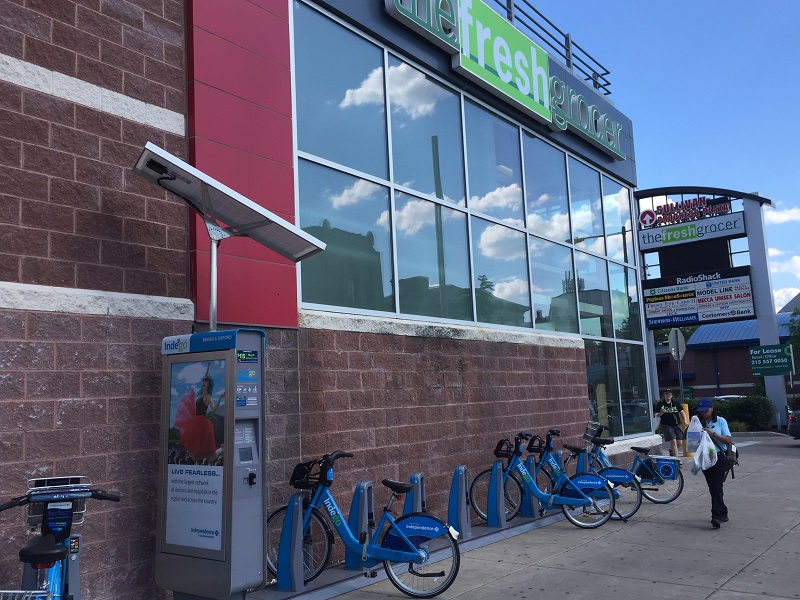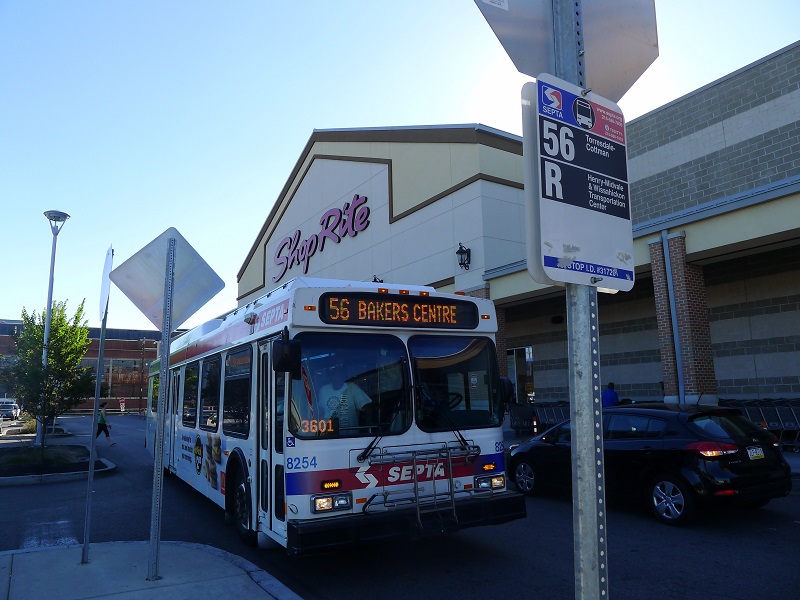“There are too many places in this country where it’s easier to buy a grape soda than a bunch of grapes,” explains Caroline Harries, Associate Director at The Food Trust, when she describes food deserts. Although there are many definitions of food deserts, they are commonly understood as places where fresh, nutritious foods are not accessible within a reasonable or convenient distance to travel. They are often defined as one mile in an urban area and ten miles in a rural area. In a car, those distances are no problem. But too many people live far from a grocery store, are low income, and don’t have access to a car.
In recent years, efforts to eradicate food deserts has centered around bringing grocery stores and other healthy food retail to underserved areas. The Food Trust, along with partners such as PolicyLink and Reinvestment Fund, has led the national movement to develop Healthy Food Financing Initiatives (HFFI), which provide low-income loans and grants to grocery stores and other healthy food retail that develop in underserved areas. As part of their process in states and cities working on HFFI, The Food Trust brings together stakeholders to identify policy recommendations to support grocery store and other healthy food retail development in underserved areas. The group together develops up to 10 recommendations toward this goal. “Often, transportation comes up as a key issue and potential support to improve access to healthy food”, says Harries. When new healthy food retail is established, people need to be able to get there. However, because healthy food retail development takes time and requires an experienced operator, there are also many food deserts where healthy food retail may not be an option any time soon, so it’s critical to consider how people are getting to and from the places where they currently buy or get healthy foods, too.

Philadelphia's Indego bike share program provides active transportation options to healthy grocery stores.
Since 2016, our organization has been working to refine a concept called Safe Routes to Healthy Food. Safe Routes to Healthy Food works to overcome the barriers to safe, convenient healthy food access for people without cars. Through the Voices for Healthy Kids initiative, we have brought together people working on different aspects of this problem into a Safe Routes to Healthy Food task force. In partnership with The Food Trust and the organizations on this task force, we’ve developed recommendations for various sectors to improve walkable, bikeable, transit accessible healthy food access.
In addition to our policy change recommendations, we also know it’s important for advocates on the ground to have immediate action steps to take to work toward Safe Routes to Healthy Food. Here are four ways healthy food access advocates can ensure their efforts to bring healthy food retail to neighborhoods will result in improved access for people who rely on walking, biking, and taking public transportation:
1) Engage people directly affected by lack of safe, convenient transportation. The most effective solutions require a nuanced understanding of a problem. To truly understand the barriers that people without cars face in getting to grocery stores, it’s imperative to talk to them. To understand the challenges and craft appropriate solutions, meet with local residents of food deserts to understand how they’re currently getting to the grocery store, how they’d like to get to the grocery store, and how accessible proposed new locations are. Questions to ask include: How do you currently get to the grocery store or wherever you buy/obtain food? Does public transportation provide a one seat ride, meaning no transfers are required? Are there sidewalks connecting residential areas to this store? Is there bikeshare located near the grocery store? Are there bicycle racks? What would make it easier, safer, and less expensive for you to get to the store? The relationships you develop during this engagement process are the first step in involving people in your advocacy efforts. These residents may be able to provide powerful testimony or show up at advocacy events that are part of your campaign.
 One-seat public transportation to grocery stores can improve access to healthy food options for residents in food deserts.
One-seat public transportation to grocery stores can improve access to healthy food options for residents in food deserts.
2) Partner with active transportation advocates. In the last decade, there have been significant investments by the CDC, other government agencies, and foundations (Communities Putting Prevention to Work, Community Transformation Grants, Partnerships to Improve Community Health, Racial and Ethnic Approaches to Community Health, Plan4Health, Voices for Healthy Kids, and more!) in place-based obesity and overweight prevention and reduction. Many of these efforts require local coalitions, in which the division of labor often gets divided among two work groups: one focused on healthy eating and the other on active living. Bring these two groups together to think through improving healthy food access for people without cars. Sometimes there is a misconception that people working to improve bike lanes and sidewalks are doing this to promote walking and biking just for physical activity. While physical activity is a benefit, often these advocates are working to improve safe connections for people to get to the places they need to go. By joining forces, you can work together to ensure that bike lanes and sidewalks get people to the places they need to go and that people who struggle to access healthy food retail can do so on foot or by bike. The challenges each of your groups wants to solve are interconnected—that means the solutions should be, too. For ideas on the policy, systems, and environmental changes your group can work toward, check out our Safe Routes to Healthy Food resources.
3) Work with grocers. It’s important to consider the businesses that will be affected by policy changes, and grocers are a key group to consider. Work with business leaders from the beginning to ensure that any policy changes you propose will not make it overly onerous for them to continue or start food businesses in underserved areas. When you frame the issue in a way that shows you’re trying to make it easier for their customers (and employees!) to get to the store, grocers may be willing to support your efforts.
4) Consider transportation access to new healthy food retail. When working to bring a new grocery store to an underserved area, consider the location of this store through the eyes of someone with a car. Better yet: make sure transportation access is part of new healthy food financing and new healthy food retail establishment efforts. As part of the “community fit” assessment, be deliberate about encouraging the transportation accessibility of the site. Assist with site selection of new healthy food retail: ensure that sites selected are in walkable, bikeable, transit-accessible locations. Give priority to accessible locations. Expand permitted uses of healthy food financing funding to allow the purchase of bike racks, improvements to parking lot design, and other changes to make it easier for people to walk/bike to the store.
By taking these four steps, you can strengthen your healthy food access advocacy efforts and more comprehensively address the challenges people face to access nutritious foods. To learn more about Safe Routes to Healthy Food and explore the recommendations and resources we’ve created for active transportation advocates, healthy communities champions, and healthy food access advocates, visit our Safe Routes to Healthy Food resource page. For ideas specific to your policy advocacy efforts or community, contact Marisa Jones, Healthy Communities Senior Manager at marisa@saferoutespartnership.org.

